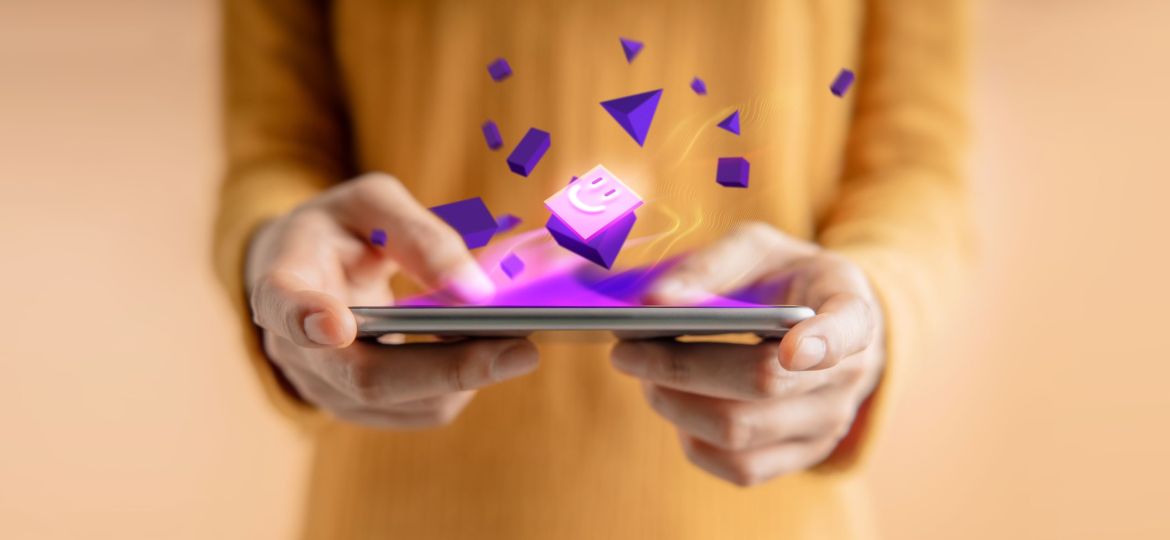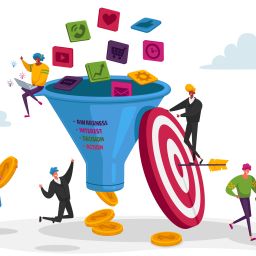
In today’s attention economy, static branding no longer cuts it. The passive consumer is fading into the background as brands reimagine their audiences not just as viewers, but as participants. Welcome to the era of gamified brand experiences, where interactivity is the new engagement, and entertainment meets strategy.
From swipe-to-play stories on Instagram to AR filters that place users inside the brand world, brands are blurring the lines between marketing and play. These aren’t gimmicks; they’re powerful tools that turn passive scrollers into active brand champions.
In this blog, we’ll explore how gamification is reshaping brand storytelling, why it works so well, and how your brand can build interactive experiences that engage, entertain, and convert.
Why Gamification Works in Marketing
Gamification taps into fundamental human psychology:
- The drive to win
- The desire for recognition
- The joy of interaction and surprise
Whether it’s a quiz that unlocks a discount or an AR lens that transforms your selfie, gamification creates memorable moments through active participation.
Key Psychological Triggers:
- Reward anticipation: People love surprises and incentives.
- Progress feedback: Visible progress encourages more engagement.
- Challenge: Light difficulty creates a sense of accomplishment.
- Social status: Leaderboards and shareable results feed the need for social currency.
When you apply these elements to brand touchpoints, you don’t just earn attention—you earn loyalty.
The Rise of Interactive Content: Formats That Work
Interactive content isn’t new, but it’s evolving fast. The rise of short-form video, AR, and mobile-first design means that brands now have countless tools to embed play into marketing.
1. Interactive Reels & TikToks
Reels aren’t just for dancing. Brands now use them as micro-challenges, quizzes, or storytelling puzzles.
Examples:
- Beauty brands asking followers to “guess the shade” based on swatches.
- Fashion brands creating “this or that” outfit transitions.
- Music brands hiding clues across videos for a fan-based scavenger hunt.
These formats build engagement metrics, save rates, and virality. And because users participate, they remember.
2. Swipe-to-Play Stories
Instagram and Facebook Stories have added features like polls, quizzes, sliders, and tap-to-choose options. These aren’t just cute add-ons; they’re conversion tools.
Tactics:
- Polls to crowdsource product names
- Quizzes to personalize product recommendations
- “Choose your path” stories for campaign storytelling
3. AR Filters and Lenses
AR filters bring brand assets into the real world—and put them on users’ faces.
Use Cases:
- A sunglasses brand letting users try on new styles virtually
- A movie studio creating an AR effect that mimics a character’s powers
- A snack brand turning your head into a giant chip bag for laughs and shares
AR invites deeper play and sharability. When done well, users voluntarily become the brand’s media channel.
4. Gamified Web Experiences
Even websites are evolving. Brands now create entire microsites that act like games or interactive narratives.
Examples:
- Custom avatar builders that lead to product recommendations
- Puzzle-based product reveals
- Interactive timelines or brand history quizzes
Turning Engagement Into Brand Equity
Gamified content builds more than just fun. It creates:
1. Deeper Brand Recall
Because users are doing something, they remember it. Unlike passive video watching, interaction requires cognitive effort.
2. User-Generated Content
Many games and filters end with a call to share results. This drives UGC and organic brand promotion.
3. Stronger Emotional Connection
When a user laughs at your filter, wins your challenge, or gets a personalized result, they feel something. That emotion gets attached to your brand.
4. Data Collection with Consent
Quizzes and games are great ways to collect preference data or feedback—voluntarily offered, because it’s fun.
Brand Case Studies: Gamification in Action
1. Nike: Reactland
Nike built a gamified in-store experience called Reactland, where users could create avatars and play a running game by physically trying on shoes. This clever blend of tech, game, and retail boosted trial and talkability.
2. Fenty Beauty: Instagram Filters
Fenty created AR filters that let users test lip shades live in their Stories. The filter wasn’t just functional—it was fun. Users shared their looks, tagged the brand, and turned try-ons into content.
3. Netflix: Bandersnatch
While not a traditional brand, Netflix’s interactive film Bandersnatch set a new precedent for choose-your-path storytelling. It proved that audiences want to interact, not just consume.
How to Design Gamified Brand Experiences
Not every brand needs a full-blown game. Start with simple interactive elements that align with your brand voice and audience.
Step 1: Know Your Player
- What entertains them?
- What challenges them?
- What do they love to share?
Step 2: Choose the Right Platform
- For Gen Z: TikTok, Reels, Snapchat lenses
- For Millennials: Instagram Stories, gamified landing pages
- For niche B2B: Interactive LinkedIn posts, webinars with polling features
Step 3: Create a Clear Hook + Reward Loop
- What’s the entry point? (Tap, swipe, try filter)
- What keeps them going? (Progress bar, surprise element)
- What do they get? (Entertainment, recognition, a deal)
Step 4: Make It Shareable
Add share buttons, save-worthy designs, or UGC prompts. Incentivize the community to take the experience viral.
Step 5: Measure, Learn, Repeat
Track:
- Time spent on interaction
- Completion rates
- Shares and saves
- Click-throughs
Use this data to refine your next interactive drop.
Challenges and Myths
“Isn’t gamification just for Gen Z?”
Not anymore. Interactivity appeals across demographics when it’s relevant. Even a professional audience enjoys a quick poll or a branded trivia challenge.
“It takes too much tech.”
Instagram polls, Typeform quizzes, Canva-made stories—many tools are low-cost and low-code.
“We sell something serious. Games won’t work.”
Even serious brands can use interaction. A mental health brand might use a quiz for stress levels. A finance company could gamify learning modules.
Gamification isn’t about being silly; it’s about being engaging.
The Future of Play in Branding
Gamified experiences are just beginning. As tech evolves, expect:
- AI-powered personalization in interactive stories
- Wearable-triggered brand games (think smartwatches)
- Blockchain-based rewards for brand challenges
- Mixed reality brand playgrounds in the metaverse
Brands that lean into play will win hearts and shares.
Final Thoughts: Play is the New CTA
We don’t just scroll anymore. We swipe, tap, remix, respond. In this landscape, the most loved brands are those that invite their audience to play.
They make marketing a moment. They make storytelling interactive. They make loyalty fun.
So next time you think of your customer journey, don’t just ask, “How do we inform them?” Ask:
“How do we involve them?”
Because when you turn your followers into players, they don’t just watch your brand. They live it.






